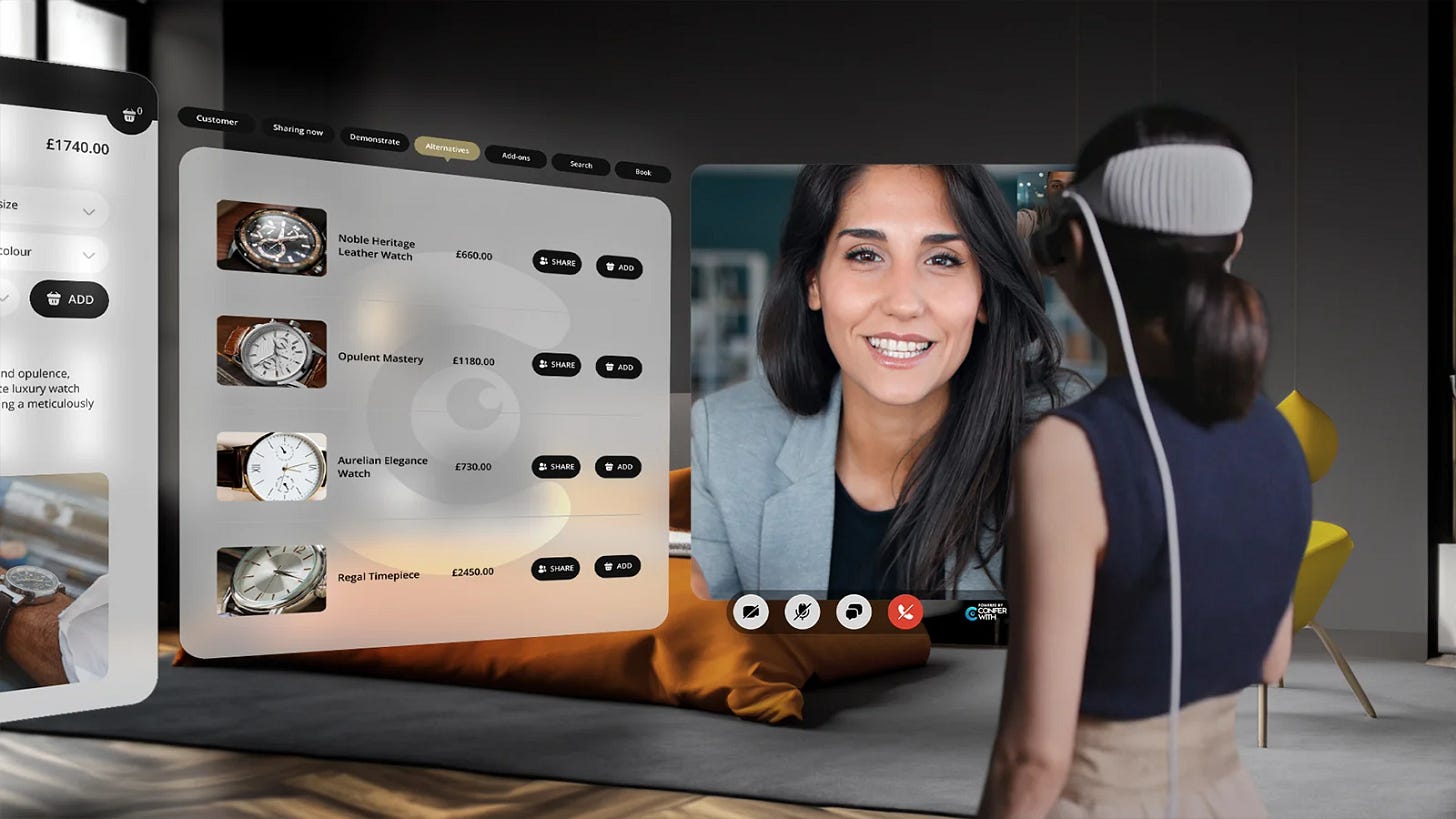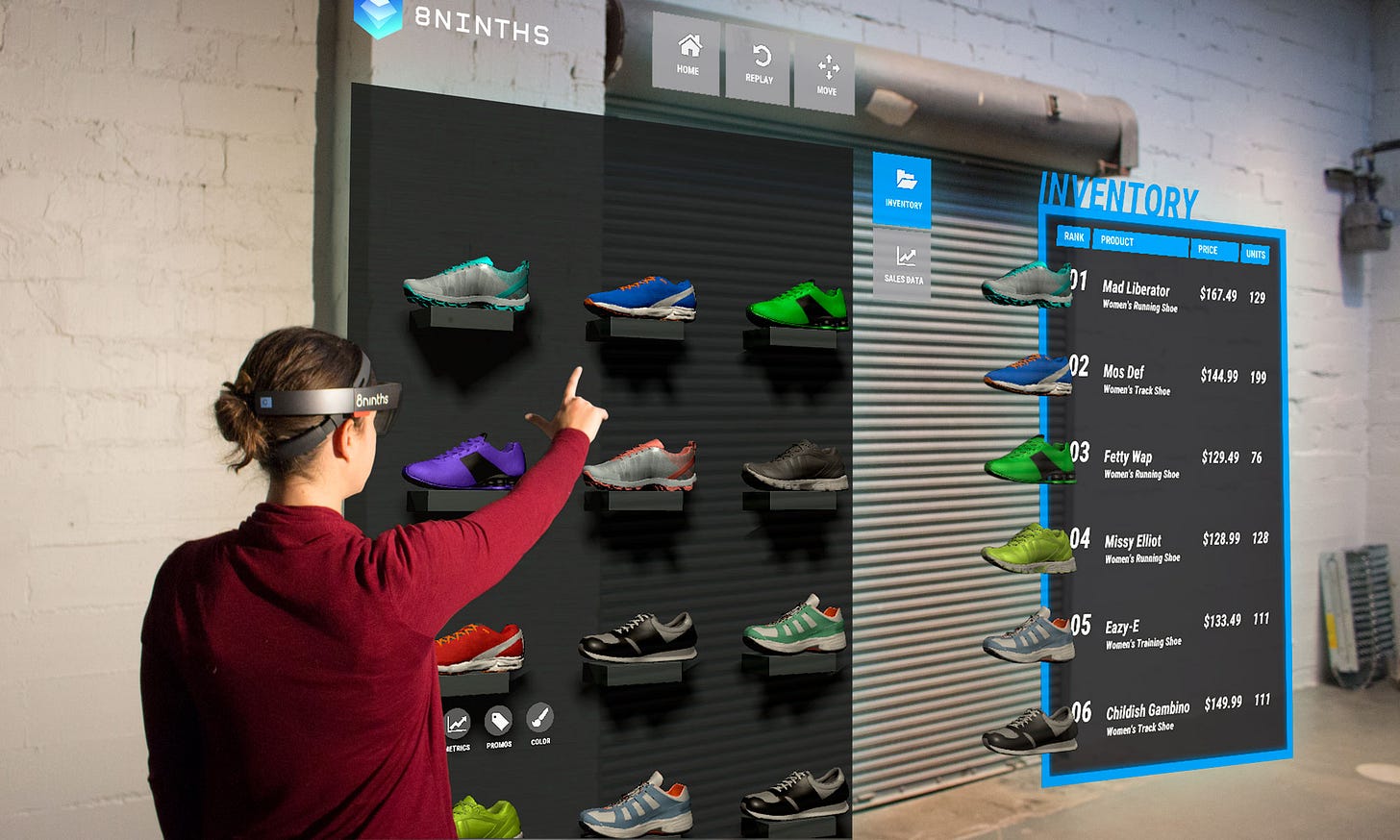What's so Spatial about Spatial Computing?
Moving past the gimmick and into the workplace and home.
Yesterday I tried the Apple Vision Pro (AVP) at my local Apple Store. If you are at all curious, or just want to experience something magical, treat yourself to a free, half-hour experience and ‘book a demo’ at your local Apple Store. I don’t care how cynical you are, it will blow your mind and first-hand experience is the only way you can understand that.
In some ways, it was a cathartic experience, after literally waiting for 10 years for Apple to get into the game.
Unboxing the Oculus Rift DK1 back in 2013!
There are many different reviews out there. I won’t give an in-depth one as I’m not sure I have much to add beyond what’s already been said. But I’ll give my quick impressions below based upon having spent hundreds of hours “immersed,” building experiences and apps across many different headsets since 2014.
What I will focus on is why this technology invigorates and inspires me, and how I think you’ll use it today and tomorrow both in a personal and business context.
To lay down some basics: there are currently only two players in this space operating at scale. The “Meta Quest 3” (~$500) is the most popular and affordable solution. The "Apple Vision Pro” (~$4000) offers the highest priced and highest spec solution.
If you’re wondering which one to buy, the answer is easy. Both. Of course, you have to decide which kidney to sell, but surely that’s a small price to pay for what is essentially the cost of entry to experience what is a profound shift in human/computer interaction and media consumption.
The Quest 3 is hard to beat for anything truly interactive or gaming-oriented. The hand-held controllers have a level of control and interaction that is very difficult to replicate with optical hand-tracking alone (hand and pupil-tracking is AVP’s primary input method). That evaluation might change as new peripherals emerge on the AVP. The Quest is more open from an ecosystem point of view both for developers and consumers. There are a lot more apps and experiences and more flexibility with the Quest, especially if you’re not 100% bought into the Apple Ecosystem.
The AVP is the most premium and elegant experience. It has the Apple simplicity straight out of the box that you could hand it to your grandmother and she’d be able to use it with little instruction. It integrates beautifully with your iPhone, Macbook, iPad, etc. Essentially just another tool in the Apple Ecosystem. For media viewing and productivity, the AVP is your device. You can get close on the Quest 3, but it’s cobbled together and doesn’t have the seamless, premium feel of the AVP.
Both the Quest 3 and the AVP are the results of billions of dollars of research over decades. The premise is simple. Fool your wetware (eyes and ears) into believing that you’re seeing something that you’re not. Interact with these virtual hallucinations in similar ways to how you’d interact with physical objects in the real world.
Why should I care?
Both of these devices offer an exclusive experience that you just can’t find anywhere else. The devices are not *currently* replacements for your phone, laptop, TV or Xbox. They’re enhancements.
They offer much of the same utility, but at a cost: both financially and with design trade-offs. They are tools for being more immersively entertained, educated, and engaged with your work, especially when working with 3D products or places.
I will briefly describe some ways in which you could use these capabilities today in a business context. I’ve designed and created solutions for clients in the past in many of these areas, but now the hardware is 10x better.
Virtual Meetings where you and your colleagues have a greater sense of connectedness than traditional video chat, especially when working collaboratively on 3D design/space /product/presentations, etc.
Infinite Screen Real Estate. Being immersed and focused on the tasks at hand without being constrained by a tiny screen or tethered to a monitor. Take your office on the go.
Working with physical objects and spaces. . .virtually. Going to a physical space or moving physical items around in a space is expensive and unwieldy. Doing that virtually is cheap and easy.
Evoking an emotional response. Basic marketing 101. There is no other medium that I’ve seen evoke such a visceral emotional response in people. Over the years, I’ve seen so many people cry from a VR experience that I’ve lost count. This is pure gold for marketers. Spatial Video memories on the AVP to me felt as though I was literally witnessing Blade Runner 2049’s Memory Facility scene.
Being Entertained and Informed.
It’s like having a 100” 4K 3D projector screen in your pocket. Paired with the spatial audio, when you watch sports and concerts it makes you feel that you are right there with the players or artists . . . There are experiences available today and this technology is about to change the media landscape. People will demand and pay a premium for these experiences. (If you do the AVP Demo ask for the Alicia Keys and Immersive Video Sports Experience.)
I have presented only a smattering of use cases. For any given industry vertical I could go on Ad Infinitum on where the capability can add value. Custom, fit-for-purpose applications are really where companies should focus.
Just like with AI, this is the time to be experimenting, innovating, and exploring how these new technologies will shape your business and personal lives in the future. As Clay Christenson extolls in, “The Innovators Dilemma” it is better to disrupt yourself than wait for your competition to foist it upon you.
These headsets allow us to have a greater number of experiences that feel real to the senses. Before I shed my mortal coil, I want to see, experience (and create) ALL OF THE THINGS. It just adds to life’s rich pageant and with these new tools we can shape the future together.
Bonus - Adam’s Hot Take on the AVP Demo
Pros
Disclaimer - I only spent 30 mins with the device so your results may vary.
+ Incredible pass-through quality / resolution. I’d say about 25-40% perceived improvement from the Quest 3 (which is also impressive).
+ Eye tracking and pinch-to-select interaction feels magical. You look at an icon and make a small thumb-to-finger gesture with your hand resting naturally by the side to select. It just worked and I was surprised how accurate and polished it felt.
+ Spatial Photos and Video - Felt like I was in a sci-fi movie. I want to see all my family pictures in this format. You can view these on the Quest 3 but requires more jumping through hoops.
+ 3D Video / TV / Movies - Arguably better viewing experience than a theater itself. Comfort and multi-viewer experiences aside, I think the Quest 3 is about 80% as good as the AVP for this but again, it is not as polished.
+ Closed Ecosystem - Apple has been seeding Mobile AR for years and so many developers apps will port easily to the headset. All your existing apps should work just fine in the AVP, which is a huge advantage.
Cons
- Comfort. WTF Apple? If you’re wearing a computer on your face you better make the damn thing comfortable. There are A LOT of variables in getting this right and obviously, everybody has different shaped heads and faces but I had to take the headset off after 20 minutes due to pain on my forehead. Now before you freak out, I believe this is a solvable problem, and frankly, it’s a universal issue across headsets. There are already a myriad of fixes and hacks and I wasn’t using the top head strap that’s included with purchase. Maybe that will improve things. I just expected Apple to nail this. With the Quest 3 I use the Bobo VR headstrap and it made a night and day improvement for my experience.
- Corrective Vision. I had expected to have optical inserts for my prescription glasses available for the in store demo but they said that their app either said I didn’t need them or they didn’t have them. Not sure which. Either way, I know I need them and I felt the demo would have been even better with them. Again, this would be solved if I made the purchase and ordered prescription inserts along with it.
- Closed Ecosystem. Up until getting the Samsung Galaxy Fold 5 I was the most die-hard Apple fanboy. But now I’m running Windows as my work machine and Android on my phone. To truly get the benefits of all the admittedly great integrations with the Apple Ecosystem I’d need to think about moving back to an iPhone and Macbook. So all of a sudden a $4K purchase might be looking closer to a $8K purchase. The closed vs. open approach is part of how Zuckerburg is repositioning Meta against Apple and Microsoft in both AI and Spatial. There are advantages and disadvantages to both models.
Thanks for reading. If you’re curious to talk about where Spatial Computing might fit into your business please do get in touch (adam@adamsheppard.org).
For some of my recent past thoughts on the Quest 3 check out.
How I fell back in love with Virtual Reality
A long time ago in a galaxy far, far away. . . . I had my first experience trying the Oculus Rift DK1 prototype Virtual Reality headset. It was 2014, and I’d been invited back to Microsoft to visit the late, great Bill Crow, a former Live Labs colleague who was working on a super secret project that I was later to discover was the “








